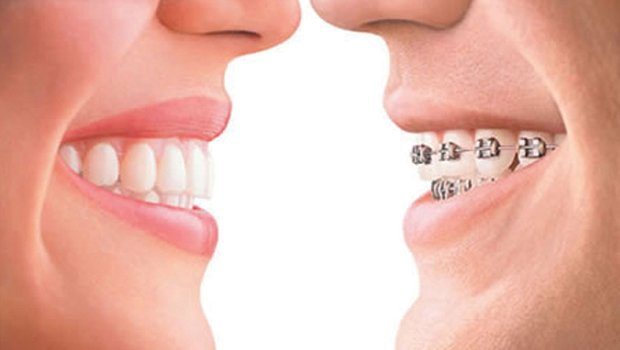When looking at the effectiveness of braces versus that of clear aligner therapy (Invisalign), we see that each method has its pros and its cons when it comes to doing it’s job- shifting teeth into place. Factors including efficiency and oral hygiene are among the few that an orthodontist may consider when choosing which method is best for a patient’s journey to straighter teeth.

Oral Hygiene
In terms of oral hygiene, Invisalign is often the preferred treatment option for compromised periodontal (gum) tissues and open sores. Invisalign trays are also removable, so they can be taken off clean your teeth. Your oral hygiene routine can remain the same. An individual with braces may find it difficult to completely clean their teeth because the brace brackets are bonded to each individual tooth and are not removable like Invisalign, although your orthodontist will most likely show you the proper way to clean under wires and around brackets.
Efficiency & Maintenance
Many patients may choose to go with Invisalign considering the fact that patients with Invisalign usually experience far shorter appointment times and far longer intervals in between appointments. Patients only have to see their orthodontist for approximately 15 minutes every 2-3 months for a standard adjustment. Invisalign overall requires less maintenance although, braces are great for patients with extreme deep bites, large spacing, and bites requiring large root movements such as extractions. A standard adjustment with braces takes approximately 30 minutes and occurs approximately every 4-8 weeks.
Orthodontists often recommend braces or Invisalign based on which treatment modality will serve each patient the more efficiently, as some tooth movements may take months for Invisalign and years for braces or vice versa.
Burnout
A major concern for the orthodontist is patient “burnout”, where the patient becomes exhausted with treatment and stops wearing elastics or Invisalign trays. When an Invisalign patient “burns out” and stop wearing their trays, treatment is effectively stopped and consequences can be seen as fast as within a few days. But with braces, if a patient stops wearing elastics for a few days, treatment can still be effective with smaller changes to get back on track. Therefore orthodontists often recommend braces in more complex cases where burning out could be a big issue in the journey to straighter teeth.
Overall Appearance
Many people choose to go with Invisalign over braces solely because Invisalign are relatively clear, while braces are very apparent. While Invisalign aligners are made from see-through plastic, which makes them invisible to others, traditional braces are made from metal wires and elastic bands. Because they are visible, braces tend to cause anxiety for some patients.
Speech
When beginning to use Invisalign, a lot of patients may realize a slight lisp in their speech, as opposed to braces where most patients do not pick up on any lisp, but it is possible.
Overall, it’s hard to say which would be the most efficient for you without a consultation. Everyone’s needs are different, it is a good idea to work with Dr. Vlahos to determine the best care plan for you.